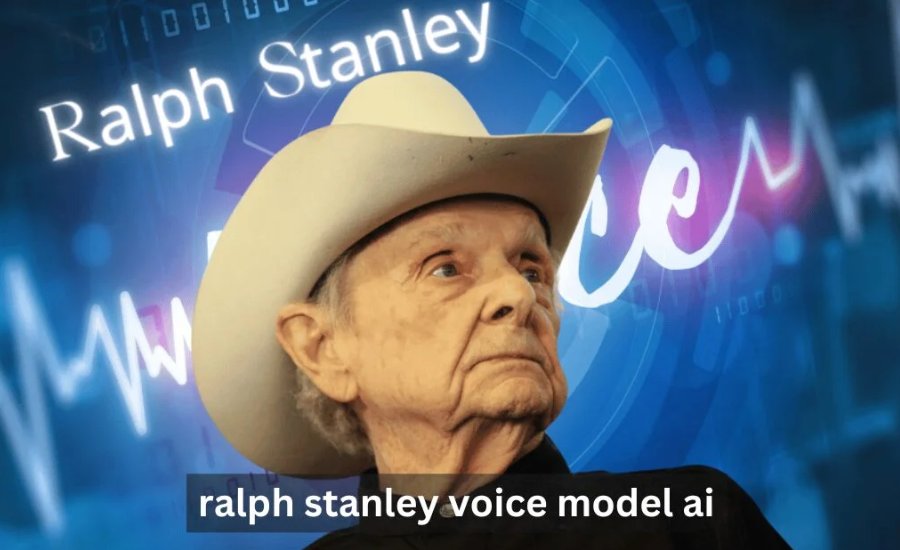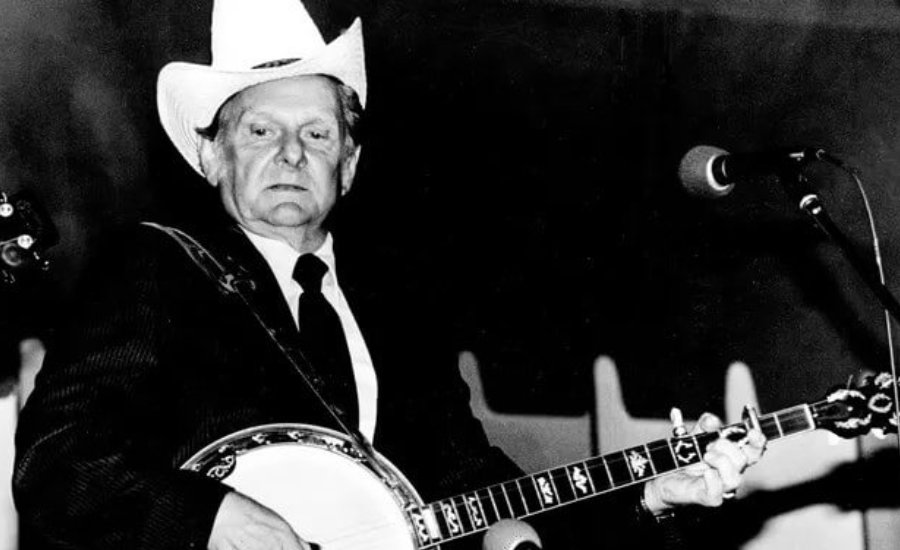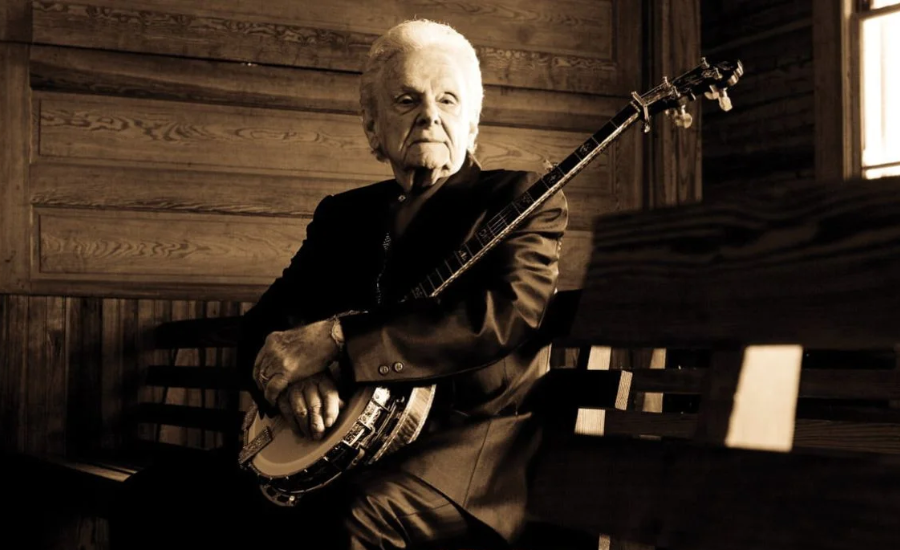If you’re eager to bring Ralph Stanley’s legendary voice into fresh musical projects, you’re in the right spot to learn about the Ralph Stanley voice model AI. Leveraging advanced AI technology, it’s now possible to recreate the unique qualities of Stanley’s voice affordably and efficiently. This guide will walk you through the basics of using artificial intelligence to emulate his voice, capturing the distinctive, soulful tone that made his music so memorable. By exploring various user-friendly tools, you’ll be able to craft audio that resonates with authenticity and echoes the essence of Ralph Stanley’s vocal legacy.
With the Ralph Stanley voice model AI, recreating his iconic sound has become more accessible than ever. These tools allow you to produce audio that reflects the natural, warm nuances of his voice, opening up possibilities for both new compositions and tribute pieces. The AI-based methods covered in this guide provide practical solutions, enabling users to effortlessly generate high-quality voice renditions. Whether for professional or personal projects, using these tools helps keep the spirit of Stanley’s music alive, allowing you to connect with the timeless quality of his voice in innovative ways.
Preserving Ralph Stanley’s Legacy: The Impact of AI Voice Modeling on Music and Cultural Heritage
Machine learning’s journey in the music industry began with simple algorithms producing basic melodies, but as technology evolved, so did the potential for AI in music creation. What started as elementary programming quickly advanced into complex systems capable of generating compositions that stand toe-to-toe with human creativity. Among the most groundbreaking applications is the development of Ralph Stanley voice model AI, a technology that allows enthusiasts to bring iconic voices like Stanley’s back to life in new musical projects. This innovation represents a leap from early AI-generated tunes, showing how AI can deeply engage with the intricacies of sound and voice.
The emergence of the Ralph Stanley voice model AI is a result of advancements in deep learning, where machines now analyse massive amounts of vocal data to recreate tones, inflections, and stylistic nuances with exceptional accuracy. This technology not only captures the signature sound of Ralph Stanley’s voice but also replicates the subtleties that defined his bluegrass style. Early milestones in AI-driven music were impressive, but voice model AI has set new standards, enabling a level of vocal authenticity that was once unimaginable. These developments have made it possible to produce recordings that sound true to the original artist, enriching creative possibilities in music.
By using the Ralph Stanley voice model AI, we’re witnessing a unique way to preserve cultural heritage. This technology allows future generations to experience Stanley’s distinct vocal legacy, helping to sustain the traditions and influence of bluegrass music. It’s a bridge between the past and present, serving as both a tribute to Stanley’s contributions and an educational tool for understanding his impact. Through this digital preservation, AI is not only advancing music but also honouring the timeless voices that shaped it.
Revitalising Music with the Ralph Stanley Voice Model AI

The Ralph Stanley voice model AI is transforming the music industry by allowing composers to incorporate Stanley’s iconic voice into new musical compositions. This groundbreaking tool brings his unique vocal style into modern music, blending traditional bluegrass with contemporary sounds to reach new audiences who may not be familiar with his contributions. The AI model breathes life back into Stanley’s vocal legacy, offering a fresh and exciting way for both fans and newcomers to connect with the legendary bluegrass artist.
An Educational Tool for Bluegrass Music
In music education, the Ralph Stanley voice model AI serves as a valuable resource for teaching vocal techniques specific to bluegrass music. By replicating Stanley’s vocal style, this tool provides students with insights into the techniques and nuances that define his music. Teachers can use this AI model to demonstrate aspects of bluegrass that are often challenging to teach, preserving the genre’s rich traditions and inspiring a new generation of musicians passionate about Stanley’s style and artistry.
Expanding Virtual Concerts and Posthumous Albums
Beyond education, the Ralph Stanley voice model AI opens up exciting possibilities for virtual concerts, where audiences can experience performances that feature Stanley’s voice as if live. This technology also paves the way for creating posthumous albums, ensuring that his musical influence continues long after his passing. Through these advancements, AI is extending the reach of cherished artists, helping to maintain Stanley’s voice as a resonant presence in the music industry and ensuring his legacy endures.
A Personal Connection for Fans
For Ralph Stanley’s fans, the AI technology offers a unique opportunity to connect with his voice on a deeply personal level. The Ralph Stanley voice model AI can create personalised messages, greetings, or even short performances, allowing fans to engage with his voice in new and meaningful ways. This innovation fosters a lasting connection between Stanley’s legacy and his admirers, making his timeless voice a cherished element in the evolving world of bluegrass music.
Getting Started with the Ralph Stanley Voice Model AI on PlayHT
PlayHT, a popular AI voice generation platform, makes it easy for users to create voice models like the Ralph Stanley voice model AI. The platform offers a free option to start training a customised voice model, allowing users to replicate Stanley’s unique sound for various projects. To get started, visit PlayHT’s Voice Cloning platform and sign up for a free account. Once you’re set up, you’ll gain access to tools that make it simple to start the voice cloning process.
Setting Up Voice Cloning for Ralph Stanley’s Voice
After creating an account, navigate to PlayHT’s Voice Cloning dashboard and select the “Clone a new voice” option. Here, you’ll begin by uploading an audio sample of Ralph Stanley’s voice, which will serve as the foundation for the Ralph Stanley voice model AI. PlayHT allows for an instant clone using a short 30-second clip, although this basic version may lack some of the depth and detail of Stanley’s signature tone. For those looking to achieve a more authentic and nuanced voice model, PlayHT also offers a high-fidelity cloning option that provides greater accuracy.
Optimising the Ralph Stanley Voice Model AI with High-Fidelity Cloning
To create a more refined version of the Ralph Stanley voice model AI, consider using PlayHT’s high-fidelity cloning feature. This option requires a longer audio sample—ideally, one to three hours of clear, high-quality recordings. Uploading a substantial sample allows PlayHT to capture the subtle qualities of Stanley’s voice, leading to a more realistic replication. While this high-fidelity process may take several hours to complete, the result is a richly detailed voice model that closely mirrors the warmth and style that define Ralph Stanley’s music.
Finalising and Using the Trained Ralph Stanley Voice Model
Once the audio processing is complete, the trained Ralph Stanley voice model AI will be ready to use. PlayHT’s platform will notify you when the model is available, and you can then use it in various applications, from educational tools to creative music projects. Whether you’re seeking to preserve Stanley’s bluegrass legacy or introduce his iconic voice to new compositions, the Ralph Stanley Voice Model AI offers a practical and engaging way to keep his sound alive in modern music.
Advanced Technology Behind the Ralph Stanley Voice Model AI

The Ralph Stanley voice model AI is a cutting-edge achievement powered by advanced machine learning and deep learning technologies. By meticulously analysing hours of Ralph Stanley’s recordings, this AI model captures the intricate details of his vocal style, such as pitch, tone, and emotional inflections. The result is an AI that can replicate Stanley’s voice with remarkable accuracy, producing outputs that echo the warmth and authenticity of his original performances. This digital recreation allows Stanley’s signature voice to live on in a modern, innovative format.
The Process of Building an Authentic Voice Model
Creating the Ralph Stanley voice model AI required an in-depth voice cloning process involving a collaborative effort between engineers and AI specialists. High-quality audio samples from Stanley’s discography were used to train the model, enabling the AI to learn the nuances of his unique vocal style. The development team focused on refining the algorithms through extensive training to achieve a model that faithfully represents Stanley’s musical and spoken voice. This attention to detail ensures that the AI can perform both spoken and sung pieces that closely resemble the bluegrass legend’s sound.
Cultural Significance and Unique Appeal
One distinguishing feature of the Ralph Stanley voice model AI is its deep connection to bluegrass music and cultural heritage. Unlike general AI voice models, this tool has been crafted with a specific focus on preserving the authenticity of bluegrass—a genre that holds significant historical and cultural value. By centering on Stanley’s voice, this AI model captures not only his vocal essence but also the spirit of bluegrass music. The project’s success may inspire similar initiatives to honour other iconic artists and their contributions within various musical genres.
A Model for Future Preservation Projects
The development of the Ralph Stanley voice model AI highlights the potential of AI technology to safeguard musical heritage. As this model becomes a tool for musicians, educators, and fans, it reinforces the importance of preserving artistic legacies through technology. This project not only celebrates Ralph Stanley’s contribution to music but also paves the way for the digital preservation of other legendary voices, allowing future generations to experience the sounds of iconic artists in a new and immersive way.
Recreating Ralph Stanley’s Voice with Advanced AI Technology
The Ralph Stanley Voice Model AI showcases the remarkable achievements in machine learning and deep learning, specifically developed to capture the essence of Ralph Stanley’s iconic voice. By analysing hours of his recordings, this AI model has been trained to replicate Stanley’s unique vocal attributes, from his intonation and tone to the emotional depth that defines his music. The AI’s ability to recreate these characteristics enables it to deliver performances that closely mirror Stanley’s original sound, preserving his legacy in an innovative, accessible way.
A Meticulous Process for Authentic Voice Cloning
Developing the Ralph Stanley voice model AI required a highly detailed approach to voice cloning, combining the expertise of engineers, music producers, and AI specialists. Using high-quality recordings of Stanley’s work, the AI was trained extensively to fine-tune its algorithms and capture the subtle nuances that make his vocal style so distinctive. This careful process resulted in a refined digital model that can produce both sung and spoken outputs that authentically reflect Stanley’s artistry, allowing users to experience his voice in a way that honours his contributions to music.
Preserving the Tradition of Bluegrass Music
The Ralph Stanley voice model AI is more than just an advanced technology; it’s a tribute to the rich cultural heritage of bluegrass music. Unlike other AI voice models, which often focus on various popular artists, this project emphasises the importance of maintaining the authentic sound and spirit of bluegrass. This success may pave the way for future initiatives to honor other influential musicians, ensuring their voices continue to inspire and resonate with new generations who may not have experienced their music firsthand.
Understanding the Process Behind Ralph Stanley Voice Model AI
Creating the Ralph Stanley Voice Model AI involves advanced machine learning techniques that analyse and reconstruct Stanley’s iconic voice. The process begins with extensive data collection, where numerous recordings of Ralph Stanley are gathered to capture the breadth of his vocal range and expressive qualities. These recordings are then meticulously prepared, with background noise and any distortions removed to ensure pristine audio quality. By working with clean, high-quality audio, the AI model is equipped to capture the nuances of Stanley’s unique sound, including his pitch, rhythm, and tone.
Detailed Analysis and Training of the AI Model
Once the recordings are prepared, specialised audio analysis programs break down Stanley’s voice to identify its defining characteristics. These programs analyse each element, focusing on essential aspects like intonation, vocal depth, and timing that make Stanley’s voice so recognizable. With this information, machine learning algorithms train the AI model to emulate Stanley’s vocal patterns, honing in on these distinct qualities. This extensive training process is essential for the AI to authentically replicate Stanley’s voice, allowing for highly realistic and nuanced vocal outputs.
Integration and Quality Testing for Realistic Voice Reproduction
After training, the Ralph Stanley voice model AI is integrated into text-to-speech, speech-to-speech, or even text-to-song platforms, making it accessible for various creative applications. Rigorous quality testing ensures that the final model not only resembles Stanley’s voice but also performs consistently across different uses. This approach delivers a lifelike voice model that honours Ralph Stanley’s legacy, allowing his unique vocal style to be experienced anew by audiences and preserving his contribution to music in a modern, innovative form.
How to Use the Ralph Stanley Voice Model AI with PlayHT’s Text-to-Speech

If you’re eager to experience the distinct sound of Ralph Stanley’s voice reading any text you desire, utilising PlayHT’s Text-to-Speech (TTS) platform is a straightforward process. Begin by visiting the PlayHT website and either create a new account or log into your existing one. Once you’re on the platform, locate the option to select the cloned voice of Ralph Stanley, which allows you to utilise his unique vocal characteristics in your projects. If you haven’t yet cloned his voice, make sure to refer to previous instructions on how to do so before proceeding.
Generating Speech with Ralph Stanley’s Voice
After selecting Ralph Stanley’s voice, you can input any text you wish to be transformed into speech. Simply type in your desired content and click on the “Generate Speech” button to hear the AI voice come to life. For those seeking a more tailored output, the platform offers “Advanced voice controls” where you can modify aspects such as stability, similarity, and intensity. This feature enables you to fine-tune the audio to better match your expectations and project requirements.
Refining Your Audio Output
Should the initial generation not meet your satisfaction, PlayHT provides an easy way to improve the output. Simply click the “Regenerate” option to produce a new audio version with adjusted parameters. This iterative process allows you to experiment until you achieve the perfect rendition of Ralph Stanley’s voice that resonates with your project’s needs. Once you’re pleased with the result, you can conveniently download the audio file for your use.
Key Features of the Ralph Stanley Voice Model AI
The Ralph Stanley Voice Model AI showcases several impressive features that enhance user experience. Voice cloning technology captures the distinctive traits of Stanley’s vocal style, producing audio that is remarkably close to the original. In addition to this, the TTS platform boasts a library of over 800 AI voice options, allowing users to select various styles for different applications. Furthermore, the ability to customise vocal elements such as pitch, speed, and pauses ensures that you can create a personalised audio experience, seamlessly integrating Ralph Stanley’s iconic sound into any project with precision and ease.
Innovative Uses of the Ralph Stanley Voice Model AI in Songwriting
The Ralph Stanley Voice Model AI has revolutionised the way modern music producers create compositions, allowing them to seamlessly integrate the iconic sound of Ralph Stanley into contemporary music. This innovative application enables artists to blend traditional bluegrass elements with modern musical styles, ensuring that Stanley’s distinctive voice continues to resonate within the music industry. By reaching out to new audiences who may not be familiar with his work, this technology plays a pivotal role in keeping his legacy alive and relevant in today’s dynamic musical landscape.
A Resource for Music Education
In addition to its applications in music production, the Ralph Stanley Voice Model AI serves as an invaluable educational tool for music educators and students alike. By providing access to Stanley’s vocal style, this AI model allows learners to gain firsthand experience in understanding the nuances of bluegrass music. This exposure not only deepens their appreciation for the genre but also helps preserve the unique artistry that defines bluegrass for future generations. Educators can use this resource to inspire students, fostering a richer connection to the traditions of American folk music.
Enhancing Live Performances and Posthumous Projects
The capabilities of the Ralph Stanley Voice Model AI extend to live performances, where fans can enjoy virtual concerts featuring Stanley’s unmistakable vocals in real time. This application enriches the concert experience, enabling audiences to engage with his music in a new and exciting way. Furthermore, the AI technology facilitates the creation of posthumous albums, allowing for the release of new music that honours the artist’s legacy long after his passing. This innovative use of AI demonstrates its potential to extend the reach of an artist’s work, ensuring that their contributions continue to be celebrated.
Personalizing Fan Engagement Through AI Technology
For fans of Ralph Stanley, the voice model offers a unique way to interact with the artist’s iconic sound on a personal level. The AI can generate customised greetings, messages, or short performances, creating memorable experiences that strengthen the connection between Stanley and his audience. By integrating his voice into everyday life, this technology not only preserves the essence of Ralph Stanley but also enriches the lives of those who cherish his music. In this way, the Ralph Stanley Voice Model AI serves as a bridge between the artist’s timeless artistry and the personal experiences of his fans.
Navigating Ethical Concerns in AI Voice Replication Technology
As artificial intelligence makes it possible to replicate the voices of deceased artists, ethical issues surrounding consent and legacy have come into sharp focus. A major challenge in using the Ralph Stanley Voice Model AI, for example, is ensuring that this technology respects the artist’s legacy and aligns with the intentions of his estate. Since artists like Stanley can no longer provide consent, it’s essential to handle AI-driven voice replication with the utmost care, honouring the memory of these musicians in a way that reflects their values and artistry. Ethical use of AI in this space is critical to preserving public trust and respect for legendary musicians.
Balancing Artistic Integrity with Technological Advancement
Finding a balance between preserving the authenticity of a musician’s original sound and leveraging AI’s creative potential is crucial. With the Ralph Stanley Voice Model AI, there are exciting new possibilities for musical creation, but it is equally important to prevent AI innovations from overshadowing the original artistry that defines musicians like Stanley. Maintaining this balance not only honours the original work but also establishes a framework for integrating AI without compromising artistic integrity. This approach can help ensure that AI enhances rather than dilutes the rich cultural heritage embodied in these artists’ voices.
AI’s Dual Impact on the Music Industry: Opportunity and Challenge
The growing use of AI in music has sparked debates about its broader implications, with AI voice replication technologies offering new creative outlets yet raising concerns for artists. The Ralph Stanley Voice Model AI, for instance, presents an opportunity to celebrate Stanley’s unique style, but it also highlights potential risks, such as job security for musicians and the effect on live performance appreciation. By exploring this dual impact, the industry can address these concerns and navigate the challenges posed by AI while harnessing its potential to enhance musical expression.
Cultural Sensitivity and Public Perception of AI-Generated Music
Public sentiment around AI-generated music is divided; some people embrace the technology, while others worry about its impact on cultural heritage. With AI voice models like the Ralph Stanley Voice Model AI, it’s crucial to consider cultural sensitivity and societal perceptions to ensure that the technology is seen as a respectful tribute rather than a commercial or impersonal tool. By keeping public opinion and cultural respect at the forefront, developers can shape AI applications that honour and celebrate the contributions of artists, creating meaningful connections with fans and the broader community.
AI Meets Tradition: Revitalising Bluegrass with the Ralph Stanley Voice Model
Bluegrass music, known for its deep historical roots, now finds itself intersecting with cutting-edge technology. The Ralph Stanley Voice Model AI embodies this blend of tradition and innovation, offering a unique way to breathe new life into the genre while adapting it for a modern audience. By incorporating AI, bluegrass has the potential to reach beyond its core fanbase and remain relevant within a fast-evolving cultural landscape. This fusion of old and new underscores the adaptability of bluegrass and its potential to thrive in the digital era.
Embracing Change or Protecting Tradition? Divided Opinions in Bluegrass
Within the bluegrass community, opinions about AI’s role vary widely. While some purists are wary, viewing the Ralph Stanley Voice Model AI as a possible threat to the genre’s authenticity, others see it as an opportunity for creative expression. Supporters argue that AI can push the boundaries of bluegrass without compromising its essence, while critics worry that it may erode the genre’s traditional values. This ongoing debate reveals a broader struggle in music: the challenge of respecting heritage while being open to transformative advancements. For bluegrass, finding a balance between these viewpoints could shape the genre’s future.
Expanding Bluegrass’s Audience Through AI-Driven Innovation
A key advantage of the Ralph Stanley Voice Model AI lies in its ability to introduce bluegrass music to a wider audience. By bringing Stanley’s voice into diverse musical settings, the AI could captivate listeners who may not have explored bluegrass before. This reach might stimulate a new wave of interest in the genre, positioning AI as a vital tool in its revival. In this way, AI isn’t just a modern novelty; it’s a means of preserving and expanding bluegrass’s cultural footprint for future generations.
Reimagining Bluegrass: Ralph Stanley Voice Model AI’s Role in a Modern Context
Bluegrass music, rooted in rich traditions, is encountering a unique transformation through contemporary technology. The Ralph Stanley Voice Model AI offers an innovative way to revive and spread bluegrass music across diverse audiences, keeping it relevant in today’s digital world. By integrating traditional elements with modern AI advancements, this tool has the potential to reach listeners beyond the genre’s traditional fan base, bridging past and present in a way that aligns with today’s fast-evolving cultural landscape.
Community Reactions: Tradition vs. Technology in Bluegrass
The introduction of AI into bluegrass has sparked varying responses within the community. Many traditionalists view the Ralph Stanley Voice Model AI with scepticism, fearing it might disrupt the genre’s authenticity and dilute its distinctive sound. Yet, proponents of technological innovation see this tool as an opportunity to expand creative boundaries, highlighting a long-standing debate within music: the balance between respecting tradition and embracing change. This conversation within the bluegrass world reflects a broader musical challenge, as genres grapple with the role of new technologies in shaping their future.
Expanding Bluegrass’s Reach Through AI Innovation
One of the Ralph Stanley Voice Model AI’s most significant contributions could be its ability to introduce bluegrass music to a broader audience. By offering Stanley’s unique voice in varied formats, AI can attract listeners unfamiliar with the genre, potentially fueling renewed interest and engagement. This technological advancement could lead to a renaissance for bluegrass, with AI playing a central role in its resurgence, ensuring that its rich legacy endures and adapts for future generations.
Preserving a Bluegrass Legacy: The Impact of Ralph Stanley’s Voice and the Role of AI

Ralph Stanley, an iconic figure in American bluegrass, was celebrated for his unique voice and exceptional banjo skills that helped shape the genre. Hailing from Virginia, Stanley, alongside his brother Carter, co-founded the influential Clinch Mountain Boys, whose music deeply impacted bluegrass’s growth and popularity. Known for his high, haunting vocal tone, Stanley conveyed an emotional depth that captured both joy and sorrow in equal measure. His distinct sound, marked by a mournful quality, brought a timeless quality to bluegrass and left an indelible mark on the genre. His influence extended to countless musicians, and through the Ralph Stanley Voice Model AI, this legacy now has the potential to reach new generations and preserve his contribution to bluegrass history in innovative ways.
Stanley’s contributions include beloved classics such as “Man of Constant Sorrow” and “O Death,” songs that continue to resonate within the bluegrass community and beyond. His music conveyed raw emotion that resonated with fans and helped bring bluegrass into the mainstream, establishing him as a true legend. The Ralph Stanley Voice Model AI has now made it possible to recreate this powerful vocal style, offering listeners a chance to experience his voice in new formats and settings. By combining tradition with technology, this AI model aims to honor Stanley’s influence while introducing his distinctive sound to wider audiences, ensuring that his remarkable legacy endures and evolves with the times.
How AI is Shaping Music’s Future with Iconic Voice Replication
The rise of artificial intelligence is set to reshape the music industry in groundbreaking ways, with AI’s influence already paving paths toward innovation and preservation of musical heritage. A prime example is the Ralph Stanley Voice Model AI, which not only showcases the capability of AI to capture and replicate iconic vocal styles but also demonstrates how it can preserve the cultural essence of legendary musicians. As this technology grows, the use of voice models in AI-generated music is anticipated to expand rapidly, making this a cornerstone of the industry’s future landscape. By emulating the distinct qualities of renowned artists, AI could offer both a means of honouring past musical traditions and a tool for crafting new soundscapes that build on these legacies.
Looking ahead, AI voice models are poised for remarkable advancements. These models are expected to become more sophisticated, with an enhanced ability to adjust across various musical genres and styles, unlocking unprecedented versatility. This evolution could foster the creation of innovative genres, transforming our understanding of music and pushing creative boundaries. As AI continues to advance, it offers artists and fans alike an entryway to unexplored musical realms, presenting limitless potential for new forms of expression and musical exploration. The Ralph Stanley Voice Model AI exemplifies how AI might redefine artistic possibilities and enrich the listener’s experience, marking a new era of creativity and discovery in the world of music.
Conclusion
Ralph Stanley’s legacy in bluegrass music is profound, blending extraordinary talent with heartfelt emotion that resonates across generations. His unique voice and innovative music continue to inspire and remain timeless, ensuring his influence endures. As technology, including AI, shapes new paths in music, it’s essential to honour the foundational contributions of artists like Stanley, who played a pivotal role in defining the genre and inspiring countless musicians. By valuing his contributions and celebrating the deep-rooted traditions of bluegrass, we can keep his memory alive and share the magic of this enduring art form with future listeners.
Stay In Touch For More Updates And Alerts: Zyn Rewards
